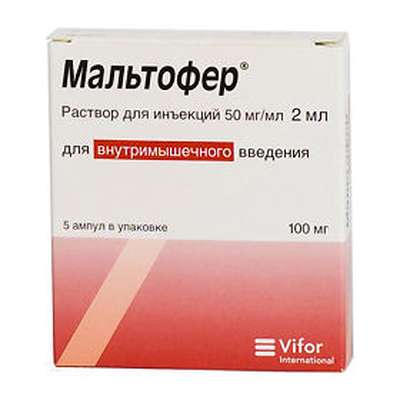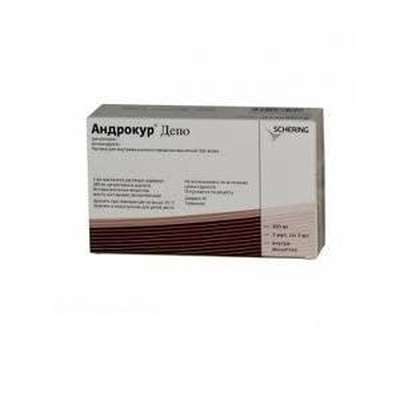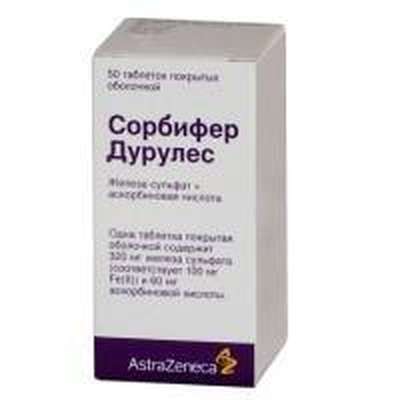Instruction for use: Eskinor-F
I want this, give me price
Active substance Levonorgestrel
Indications
Inside. Emergency postcoital contraception in women (after unprotected intercourse or unreliability of the contraceptive method used).
For military technical cooperation. Contraception (long-term), idiopathic menorrhagia, prevention of endometrial hyperplasia during estrogen replacement therapy.
Contraindications
Inside. Hypersensitivity to levonorgestrel; Severe hepatic impairment; Pregnancy (including alleged); The period of breastfeeding; Age to 16 years.
For military technical cooperation. Pregnancy or suspicion of it; Existing or recurrent inflammatory diseases of the pelvic organs; Infections of the lower parts of the urinary and genital tract; Postpartum endometritis; Septic abortion within the last 3 months; Cervicitis; Diseases accompanied by increased susceptibility to infections; Dysplasia of the cervix; Malignant neoplasms of the uterus or cervix; Progestogen-dependent tumors, incl. mammary cancer; Pathological uterine bleeding of unclear etiology; Congenital or acquired abnormalities of the uterus, incl. Fibromiomas leading to deformation of the uterine cavity; Acute diseases or liver tumors; Hypersensitivity to levonorgestrel.
The use of levonorgestrel in VTS has not been studied in women older than 65 years, so it is not recommended for this category of patients.
pregnancy and lactation
Levonorgestrel should not be taken during pregnancy. If the pregnancy has developed against the background of its reception, then, based on the available data, the adverse effect of levonorgestrel on the fetus is not expected.
VTS. The use of levonorgestrel in the VTS is contraindicated in pregnancy or suspected of it. Pregnancy in women who have established VTS containing levonorgestrel is a very rare phenomenon. But if there is a loss of VTS from the uterine cavity, the woman is no longer protected from pregnancy, and should use other methods of contraception before consulting a doctor.
During the application of levonorgestrel in the VTS, some women do not have menstrual bleeding. The absence of menses is not necessarily a sign of pregnancy. If a woman does not have menstruation and at the same time there are other signs of pregnancy (nausea, fatigue, tenderness of the mammary glands), then you need to see a doctor for examination and a pregnancy test.
If pregnancy occurs in a woman during the application of levonorgestrel as part of the military technical cooperation, it is recommended to remove the VTS because Any intrauterine contraceptive left in situ increases the risk of spontaneous abortion, infection, or premature birth. Removal of HHV or uterine sounding can lead to spontaneous abortion. If it is not possible to remove the intrauterine contraceptive gently, the advisability of medical abortion should be discussed. If a woman wants to stay pregnant and VTS can not be removed, the patient should be informed of the risks, in particular about the possible risk of septic abortion in the second trimester of pregnancy, postpartum purulent-septic diseases that can be complicated by sepsis, septic shock and death, and possible consequences Premature birth for a child.
In such cases, the course of pregnancy should be carefully monitored. It is necessary to exclude ectopic pregnancy. A woman should be told that she should tell the doctor about all the symptoms that allow her to assume complications of pregnancy, in particular about the appearance of spasticity pain in the lower abdomen, bleeding or bloody discharge from the vagina, and a rise in body temperature. Levonorgestrel in the VTS is released into the uterine cavity. This means that the fetus is exposed to a relatively high local concentration of the hormone, although through the blood and the placenta the hormone enters it in small amounts. Because of intrauterine application and local action of the hormone, it is necessary to take into account the possibility of a virilizing effect on the fetus. Due to the high contraceptive efficacy of levonorgestrel in the VTS, clinical experience related to pregnancy outcomes when it is used is limited. However, a woman should be informed that at this time, there is no evidence of congenital deffects caused by the use of levonorgestrel in the VTS in cases of continued pregnancy before delivery without removal of VTS.
Levonorgestrel penetrates into the mother's milk. After taking it, breastfeeding should be stopped for 24 hours.
VTS. Breastfeeding of a child when using levonorgestrel as part of VTS is not contraindicated. About 0.1% of the dose of levonorgestrel can enter the baby's body during breastfeeding. Nevertheless, it is unlikely that he would pose a risk to the baby at doses released into the uterus after the installation of the VTS.
It is believed that the use of levonorgestrel in the VTS 6 weeks after birth does not have a harmful effect on the growth and development of the child. Monotherapy with gestagens does not affect the quantity and quality of breast milk. There have been reports of rare cases of uterine bleeding in women using levonorgestrel in the VTS, during the lactation period.
Fertility. After the removal of VTS, fertility is restored in women.
Side effects
The frequency of side effects (PD) after taking levonorgestrel: very often (≥1 / 10); Often (≥1 / 100, <1/10).
Very often - nausea, fatigue, abdominal pain, acyclic spotting (bleeding).
Often - vomiting, diarrhea, dizziness, headache, breast tenderness, breast tension, dysmenorrhea, profuse menstrual bleeding, delay in menstruation (no more than 5-7 days, if menstruation does not occur for a longer period, pregnancy should be excluded). Allergic reactions are possible: hives, rashes, itching, swelling of the face.
VTS. In most women, after the installation of VTS containing levonorgestrel, the character of cyclic bleeding changes. During the first 90 days of use, an increase in the duration of bleeding is noted by 22% of women, and irregular bleeding occurs in 67% of women, the incidence of these events decreases to 3% and 19%, respectively, by the end of the first year of VTS use. Simultaneously, amenorrhea develops in 0%, and rare bleeding - in 11% of patients during the first 90 days of use. By the end of the first year of application, the frequency of these phenomena increases to 16 and 57%, respectively.
When levonorgestrel is used in combination with long-term estrogen replacement therapy in most women, cyclic bleeding gradually ceases during the first year of use.
Below are the data on the incidence of PD, reported when using levonorgestrel as part of the military technical cooperation. The frequency of occurrence of PD: very often (≥1 / 10); Often (≥1 / 100, <1/10); Infrequently (≥1 / 1000, <1/100); Rarely (≥1 / 10000, <1/1000); Frequency is unknown. PD are represented by the classes of the organ system according to MedDRA. The frequency data reflect the approximate frequency of the occurrence of PD, registered in the clinical trials of levonorgestrel in the military-technical cooperation according to the indications "contraception" and "idiopathic menorrhagia" with the participation of 5,091 women.
PD, reported in the clinical trials of levonorgestrel in the VTS, as indicated by "prevention of endometrial hyperplasia in estrogen replacement therapy" (involving 514 women) were observed at the same frequency, except for the cases indicated by asterisks (*, **) .
On the part of the immune system: the frequency is unknown - hypersensitivity to levonorgestrel, including rash, hives and angioedema.
From the side of the psyche: often - a depressed mood, depression.
From the nervous system: very often - headache; Often - migraine.
From the digestive tract: very often - pain in the abdomen, pain in the pelvic region; Often - nausea.
From the skin and subcutaneous tissues: often - acne, hirsutism; Infrequently - alopecia, itching, eczema.
From the osteomuscular system and connective tissue: often - back pain **.
On the part of the reproductive system and mammary glands: very often - a change in the volume of blood loss, including an increase and decrease in the intensity of bleeding, spotting spotting, oligomenorrhea, vulvovaginitis *, discharge from the genital tract *; Often - pelvic infection, ovarian cysts, dysmenorrhea, pain in the mammary glands **, engorgement of the mammary glands, expulsion of the VTS (full or partial); Rarely - perforation of the uterus (including penetration).
Results of the examination: the frequency is unknown - increased blood pressure.
* Often according to the indication "prophylaxis of endometrial hyperplasia during estrogen replacement therapy".
** Very often according to the indication "prophylaxis of endometrial hyperplasia during estrogen replacement therapy".
To describe specific reactions, their synonyms and associated states, in most cases the terminology corresponding to MedDRA is used.
Precautionary measures
Ingestion
Levonorgestrel should be taken exclusively for emergency contraception. Recurrence during one menstrual cycle is not recommended.
Levonorgestrel should be taken as soon as possible, but no later than 72 hours after unprotected intercourse. The effectiveness of emergency contraception with delayed use is significantly reduced.
Levonorgestrel does not replace the use of permanent methods of contraception. In most cases, it does not affect the nature of the menstrual cycle. However, acyclic bleeding may occur and menstruation may be delayed for several days. If you delay menstruation for more than 5-7 days and change its nature (meager or abundant discharge) it is necessary to exclude pregnancy. The appearance of pain in the lower abdomen, fainting can indicate ectopic (ectopic) pregnancy.
In adolescents under 16 years of age, the use of levonorgestrel is only possible in exceptional cases (including with rape) and only after consulting a gynecologist. After emergency contraception, a second consultation with a gynecologist is recommended.
In diseases of the gastrointestinal tract (gastrointestinal tract) (eg Crohn's disease), as well as in women with excessive body weight, the efficacy of levonorgestrel may decrease.
Levonorgestrel should be used with caution in women with liver or bile duct disease, with a history of pelvic inflammatory disease or ectopic pregnancy, with a hereditary or acquired predisposition to thrombosis.
When applying VTS
Before the installation of VTS containing levonorgestrel, it is necessary to exclude pathological processes in the endometrium, because in the first months of its use, irregular bleeding / spotting spots are often noted. Also, it is necessary to exclude pathological processes in the endometrium in the event of bleeding after the initiation of estrogen replacement therapy in a woman who continues to use levonorgestrel as part of an VTS previously established for contraception. Appropriate diagnostic measures must also be taken when irregular bleeding develops during prolonged treatment.
Levonorgestrel as part of the VTS is not used for postcoital contraception.
Levonorgestrel should be used with caution in women with congenital or acquired valvular heart defects, bearing in mind the risk of septic endocarditis. When installing or removing VTS, these patients should be prescribed antibiotics for the purpose of prevention.
Levonorgestrel in low doses can affect glucose tolerance, and therefore its concentration in the blood plasma should be monitored regularly in women with diabetes mellitus using levonorgestrel in the VTS. As a rule, correction of a dose of hypoglycemic drugs is not required.
Some manifestations of polyposis or endometrial cancer can be masked by irregular bleeding. In such cases, an additional examination is needed to clarify the diagnosis.
Levonorgestrel as part of the military technical cooperation does not apply to the means of the first choice, either for young, previously unrepentant women, or for women in the postmenopausal period with pronounced atrophy of the uterus.
Available data suggest that the use of levonorgestrel in VTS does not increase the risk of developing breast cancer in postmenopausal women under the age of 50 years. Due to the limited data obtained during the study of this drug according to the indication "prophylaxis of endometrial hyperplasia during estrogen replacement therapy", the risk of breast cancer when it is used for this indication can not be confirmed or disproved.
Oligo- and amenorrhea. Oligo- and amenorrhea in women of fertile age develops gradually, approximately in 57 and 16% of cases by the end of the first year of application of levonorgestrel in the VTS, respectively. If menstruation is absent during the 6th week after the start of the last period, pregnancy should be excluded. Repeated pregnancy tests for amenorrhea are not necessary if there are no other signs of pregnancy.
When levonorgestrel in the VTS is used in combination with estrogen replacement therapy in a continuous regime, most women develop amenorrhea gradually during the first year.
Inflammatory diseases of the pelvic organs (PID). The conductor tube helps to protect the VTS containing levonorgestrel from infection during installation, and the device for the introduction of VTS is specially designed to minimize the risk of infection. PID in patients using VTS often refers to sexually transmitted diseases. It has been established that the presence of multiple sexual partners is a risk factor for PID. PID can have serious consequences: they are able to disrupt the reproductive function and increase the risk of ectopic pregnancy.
As with other gynecological or surgical procedures, severe infection or sepsis (including group A streptococcal sepsis) can develop after the installation of VTS, although this happens extremely rarely.
With relapsing endometritis or PID, as well as with severe or acute infections resistant to treatment for several days, VTS containing levonorgestrel should be removed. If a woman has constant pain in the lower abdomen, chills, fever, pain associated with sexual intercourse (dyspareunia), prolonged or profuse bleeding / bleeding from the vagina, the nature of vaginal discharge has changed, you should immediately consult a doctor. Severe pain or fever, which appear soon after the installation of VTS, may indicate the presence of a serious infection, which must be treated immediately. Even in cases where only individual symptoms indicate the possibility of infection, bacteriological research and monitoring are indicated.
Expulsion. Possible signs of partial or complete expulsion of any VTS - bleeding and pain. Contractions of the uterine muscles during menstruation sometimes lead to displacement of the VTS or even to expulsion from the uterus, which leads to an end to the contraceptive effect. Partial expulsion may decrease the effectiveness of VTS containing levonorgestrel. Since levonorgestrel in the VTS reduces menstrual blood loss, its increase may indicate an expulsion of VTS. A woman is advised to check the threads with her fingers, for example during a shower. If a woman has detected signs of displacement or loss of VTS or not groped for threads, sexual intercourse or other methods of contraception should be avoided, and a doctor should be consulted as soon as possible.
If the position in the uterine cavity is incorrect, the VTS should be removed. At the same time, a new system can be installed.
Perforation and penetration. Perforation or penetration of the body or cervix of the uterus occurs rarely, mainly during the installation, and may reduce the effectiveness of levonorgestrel in the VTS. In these cases, the system should be removed. If delayed diagnosis of perforation and VTS migration, complications such as adhesions, peritonitis, intestinal obstruction, intestinal perforation, abscesses or erosion of adjacent internal organs can occur. The risk of perforation of the uterus is increased in women with breastfeeding. It is possible to increase the risk of perforation when installing VTS after birth and in women with a fixed bend in the uterus.
Ectopic pregnancy. Women with an ectopic (ectopic) pregnancy in history who underwent oviduct surgery or pelvic infection are at higher risk of ectopic pregnancy. The possibility of an ectopic pregnancy should be considered in case of abdominal pain, especially if it is combined with the cessation of menstruation or when a woman with amenorrhea starts bleeding. The frequency of ectopic pregnancy when using VTS containing levonorgestrel is approximately 0.1% per year. The absolute risk of ectopic pregnancy in women using this drug is low. However, if a woman with an established VTS containing levonorgestrel is pregnant, the relative probability of an ectopic pregnancy is higher.
Loss of threads. If gynecological examination of the strand for removal of VTS can not be detected in the cervical region, pregnancy should be excluded. Threads can be drawn into the uterine cavity or cervical canal and become visible again after another menstrual period. If pregnancy is excluded, the location of the strands can usually be determined by careful probing with the appropriate instrument. If it is not possible to detect the filaments, it is possible that the expulsion of HH from the uterine cavity occurred. To determine the correct location of the system, you can use ultrasound. If it is unavailable or unsuccessful, an X-ray study is used to determine the localization of VTS.
Ovarian cysts. Since the contraceptive effect of levonorgestrel in the VTS is due, mainly to its local effect, in women of fertile age, ovulatory cycles with follicle rupture are usually observed. Sometimes atresia of the follicles is delayed, and their development can continue. Such enlarged follicles are clinically impossible to distinguish from ovarian cysts. About ovarian cysts as an adverse reaction was reported in approximately 7% of women using levonorgestrel-containing VTS. In most cases, these follicles do not cause any symptoms, although sometimes they are accompanied by pain in the lower abdomen or pain during sexual intercourse.
As a rule, the ovarian cysts disappear on their own for two to three months of observation. If this does not happen, it is recommended to continue monitoring with ultrasound, as well as the provision of medical and diagnostic measures. In rare cases, it is necessary to resort to surgical intervention.
The use of levonorgestrel in the VTS in combination with estrogen replacement therapy. When levonorgestrel is used as part of VTS in combination with estrogens, the information specified in the instructions for the use of the corresponding estrogen must be taken into account.
Impact on the ability to drive vehicles and working mechanisms. The effect of levonorgestrel on the ability to drive vehicles and work with mechanisms has not been investigated. In case of development of dizziness, it is necessary to refrain from driving vehicles and working with mechanisms mechanisms requiring increased concentration of attention and speed of psychomotor reactions.

 Cart
Cart





